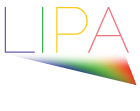Laser Regulations
Projector manufacturers have long sought to develop products that provide the best possible picture on a screen or surface. Lamps – whether large Xenon short-arc lamps or small mercury halide bulbs — have served well and provided the best solution for many years. But they have drawbacks, including: handling safety hazards, high-temperatures, relatively-short lifetimes and difficulty of transportation and disposal.
Using a laser module as the light source in digital projectors has several dramatic financial and quality benefits over the lamps used in most projectors today. Although people tend to worry about eye exposure safety when they hear the term ‘laser’, it is very important to note that in projector applications the projected light from a laser illuminated projector is essentially no more hazardous that the light from current projectors!
Indeed, the light emitted from laser-illuminated projectors is processed in such a way that it loses all of the usual qualities of lasers that are valued in many other laser applications. (see a graphic representation of this)
The scientific analysis supports this conclusion and thus, the international standards body that sets standards for lasers and their use – the IEC – recently changed its categorization of laser illuminated projectors from a laser standard (60825-1:2014) to the lamp standard (IEC 62471). As of July 2015, the lamp standard contains a ‘vertical’ standard, IEC 62471-5, which directly addresses safety requirements for projectors.
These new standards are quickly promulgating in many areas of the world through updates to national and regional enforcement documents. Safety-standards agencies in the EU and Japan, for example, have taken swift action to revisit and revise their safety regulations to make it economically possible to harness the inherent advantages of laser light over Xenon or other lamp-based lighting approaches.
Addressing Laser Regulations
The multitude of multi-national regulatory and legislative organizations requires the industry to be strategic in its approach to making smart and effective changes to safety requirements. LIPA has been created by the industry to educate regulatory institutions worldwide on the needed changes to current regulations.
In the U.S., for example, regulations from the U.S. Food and Drug Administration (FDA) are evolving to take into consideration the scientific findings now available. Currently manufacturers have some lee-way in testing and certifying their LIP systems. Cinema projector manufacturers have applied and been granted product variances to install their projectors in public spaces. Lower-power projectors are exempt from this requirement.
The Solution
The FDAʼs Center for Devices and Radiological Health (CDRH), tasked with regulating Laser Light Shows, has expressed a willingness to implement new legal requirements as appropriate for this emerging technology. Since 2011, LIPA has been asking the FDA to take the steps necessary to resolve this matter as wide-spread installation of laser based projection systems into offices, conference rooms and theaters worldwide. Similar steps have been taken in the European Union. Read here for the current situation (July, 2015)
Gathering industry consensus for application for change is only one part of LIPA activity. Other activities include understanding and helping revise international regulations and definitions within the International Standards Organization (ISO) and International Electrotechnical Commission (IEC), Occupational Health and Safety Administration (OSHA), the American National Standards Institute (ANSI), and the CDRH’s Board of Laser Safety.
As well, LIPA continues to conduct technical tests and create new and useful measurements of LIPs and share the methodologies and results with the expert bodies in order to help them understand the characterization of laser light in use for projectors.


